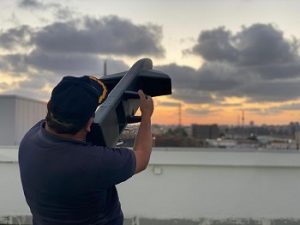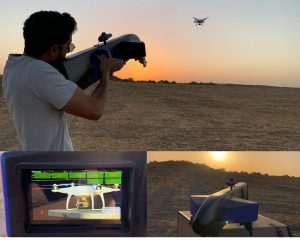Device identification becomes more important in a world where device manufacturers are constantly updating their identifying algorithms. An International Mobile Subscriber Identity (IMSI) number can be used to track your location and service provider information.
However, with the global indoctrination of the IMSI numbers, it is important to establish what an IMSI is and how it works.
What Is an International Mobile Subscriber Identity?
The International Mobile Subscriber Identity, or IMSI, is a unique number provided to a mobile subscriber’s SIM card. IMSI is a 15-digit number that identifies a mobile phone subscriber within a network.
During most of the contact with the mobile phone, the network employs a temporary number known as Temporary Mobile Subscriber Identity, or TMSI, to ensure the confidentiality of the mobile user.
It specifies the GSM network operator with whom the subscriber has an account in a certain country. A network operator assigns the second part to uniquely identify the subscriber. The concept of an International Mobile Subscriber Identity was first formulated in 1988.
An IMSI is kept in the phone’s Subscriber Identity Module, or SIM, and sent to the relevant network by phone. This IMSI is used to look up information about a mobile phone in the Home Location Register (HLR) or Visitor Location Register (VLR).
How Does the IMSI Number Work?
At the time of use, the IMSI is allocated to a mobile station or cellphone tower. It is used to identify a certain mobile station. IMSI is a 15-digit number that carries the following information:
1. MCC (Mobile Country Code) — three digits (home country)
2. MNC (Mobile Network Code) — two digits (home network)
3. Subscriber Identification Number (SIN) for mobile phones (MSIN)
When Is the IMSI Number Used?
A user does not need to know or be concerned about their IMSI number. Nonetheless, they can find out their IMSI number using programs available in app stores.
Mobile carriers utilize the IMSI as the mobile subscriber’s identified to assign and manage any services that are assigned to that subscriber.
The first two elements of an IMSI number can indicate whether a mobile user is roaming outside of their country, allowing mobile providers to apply the proper invoicing.
Tracing an IMSI Number
If you are not the phone subscriber, you must work for the operator or police enforcement with a legal right (such as a warrant) and must know the most recent location.
The cell phone network knows which cellphone is on, when it is on a call, or when it is utilizing data. A network provider knows the position of a little bigger set of cells, and the most recent active cell if the phone is idle.
Networks may only know the last call that the phone was on before it was shut off if the phone is currently switched off.
IMSI Catcher
An International Mobile Subscriber Identity catcher is a gadget that uses the unique IMSI number to detect and track all mobile phones connected to a phone network in its area.
It accomplishes this by impersonating a cellphone tower and deceiving adjacent mobile phones into connecting to it. This allows it to intercept data sent from that phone to the cell tower without the user knowing.
In this circumstance, the most readily available information about you is your location. Cell towers use triangulation to determine your approximate location, which is how network providers provide you with service in the first place.
Data kept on a phone is not read by IMSI catchers. These devices may be used to intercept phone calls or text messages.
IMSI catchers are unable to read the contents of encrypted messages sent over end-to-end encrypted systems. Some examples are Signal, WhatsApp, and Wire.
How Law Enforcement May Use IMSI Catchers
An IMSI catcher can be used by the authorities to determine who was present at a protest by capturing the IMSI numbers of all the phones in the area.
Some IMSI catchers can even help the authorities disrupt or prevent protests before they take place.
They can be used to track or block your calls and messages or change your messages without your knowledge. They may even be used to write and text someone, posing as you.
Final Thoughts
Device identification becomes more important as more devices join the network, especially in a world where device manufactures are constantly updating their identification algorithms.
To ensure network operators assign relevant services to the right devices, accurate identification devices are required.







